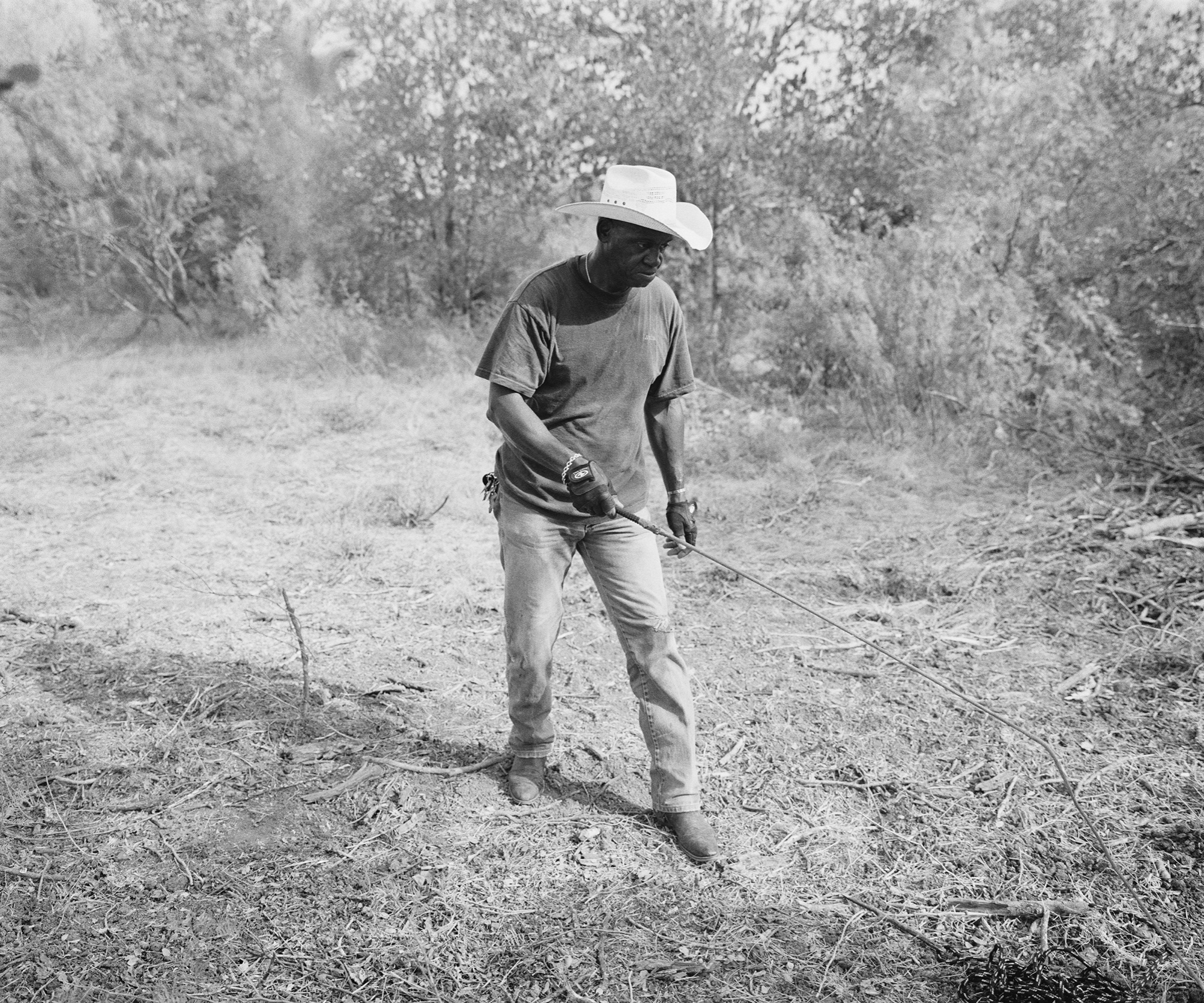
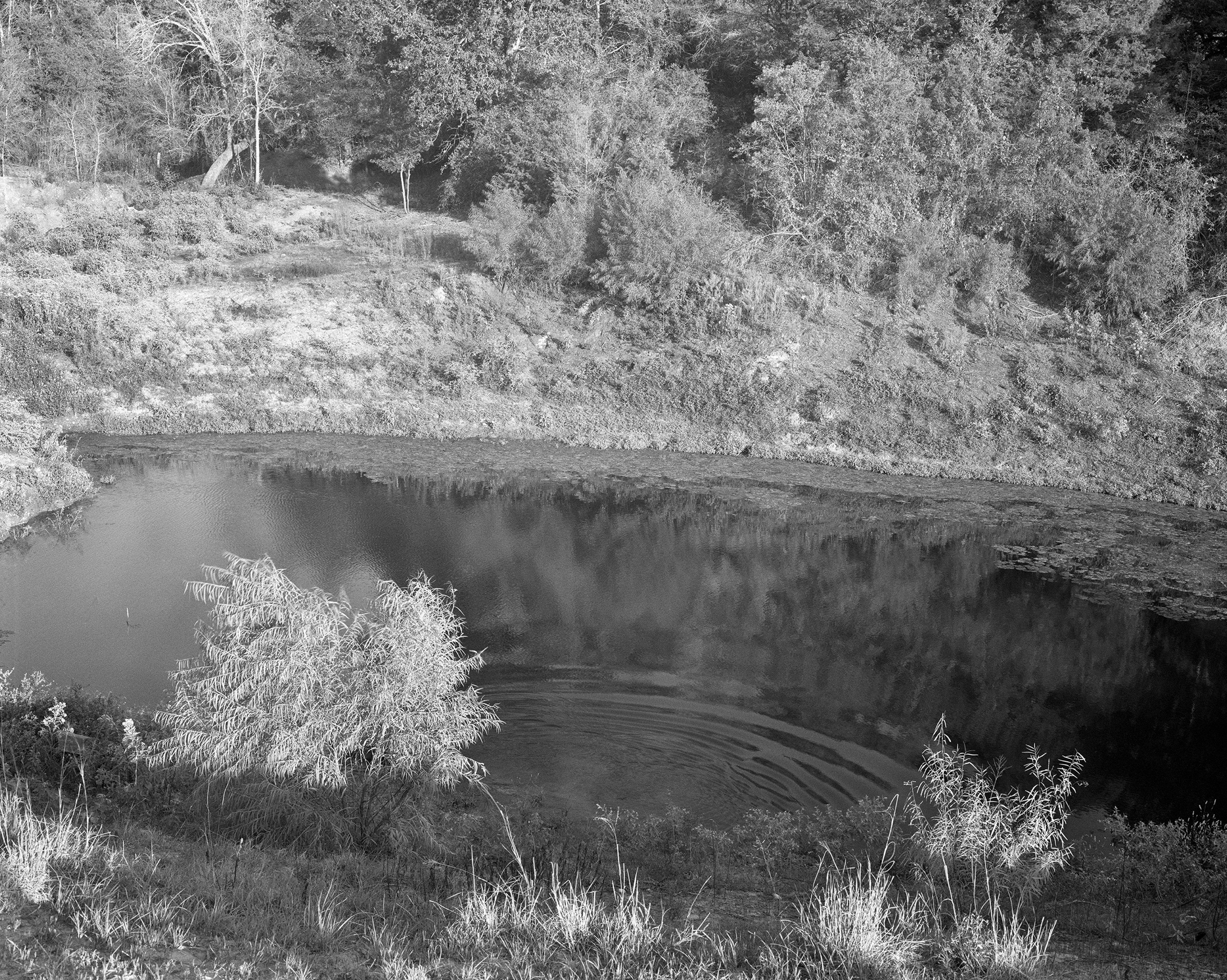

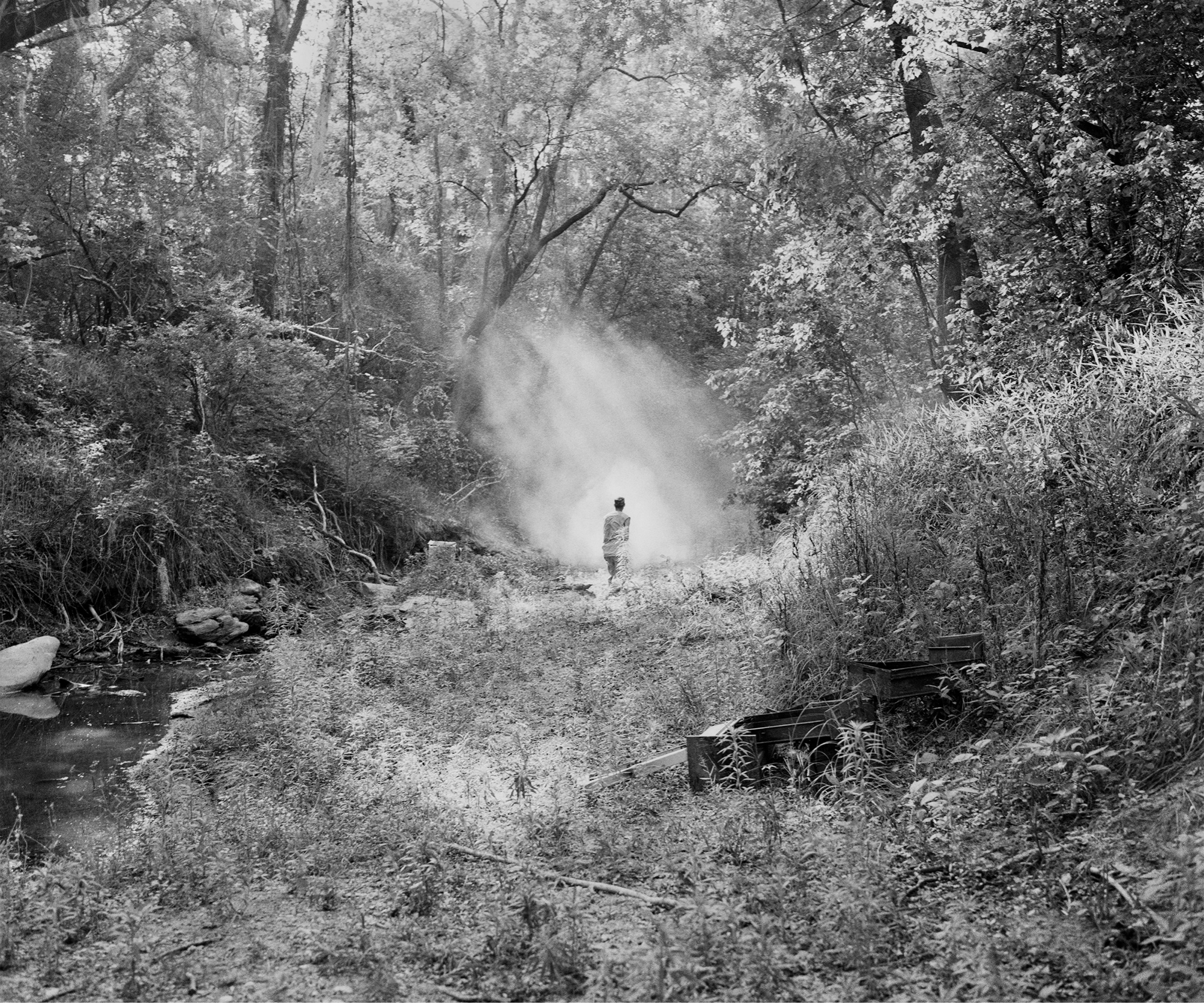


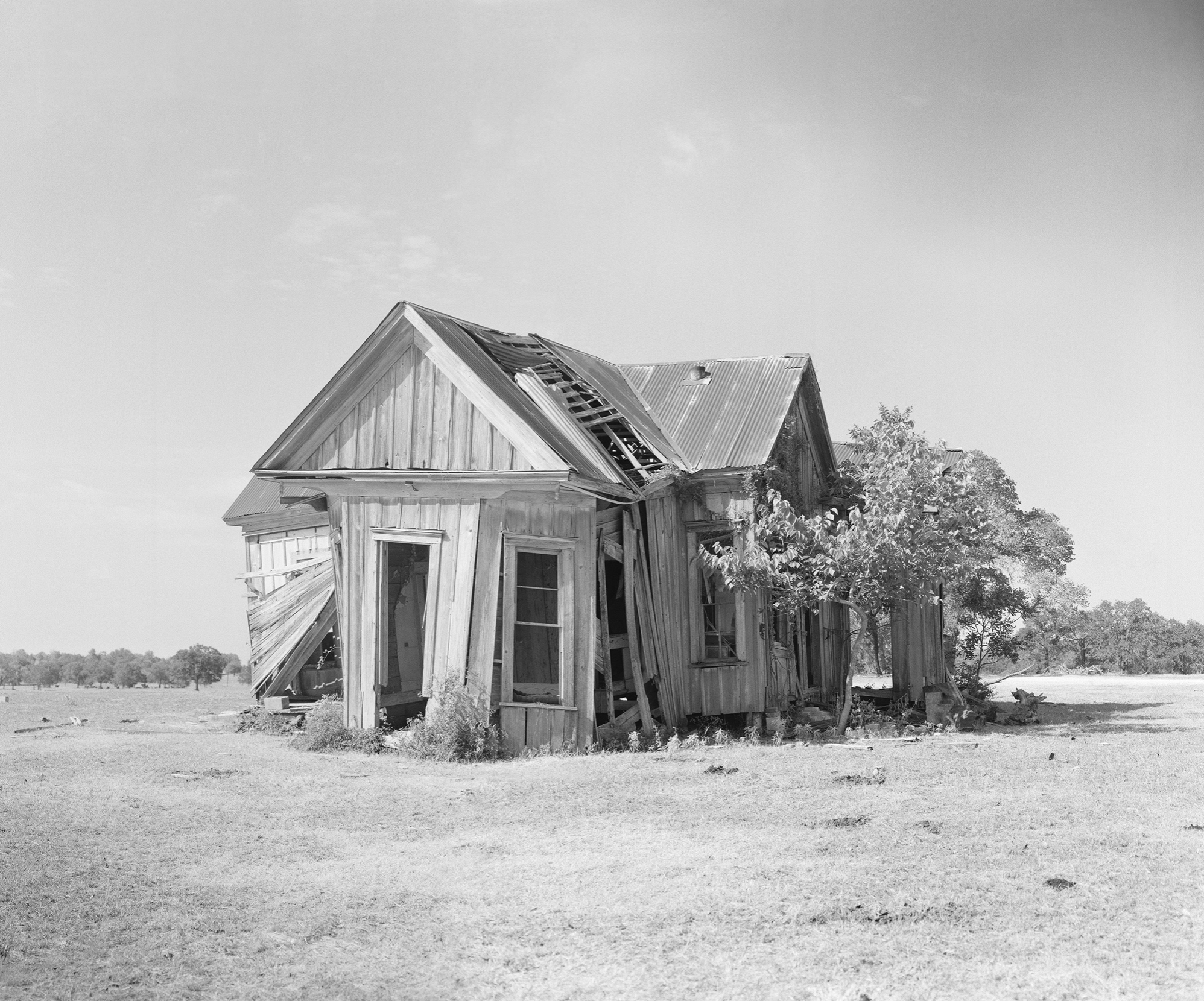
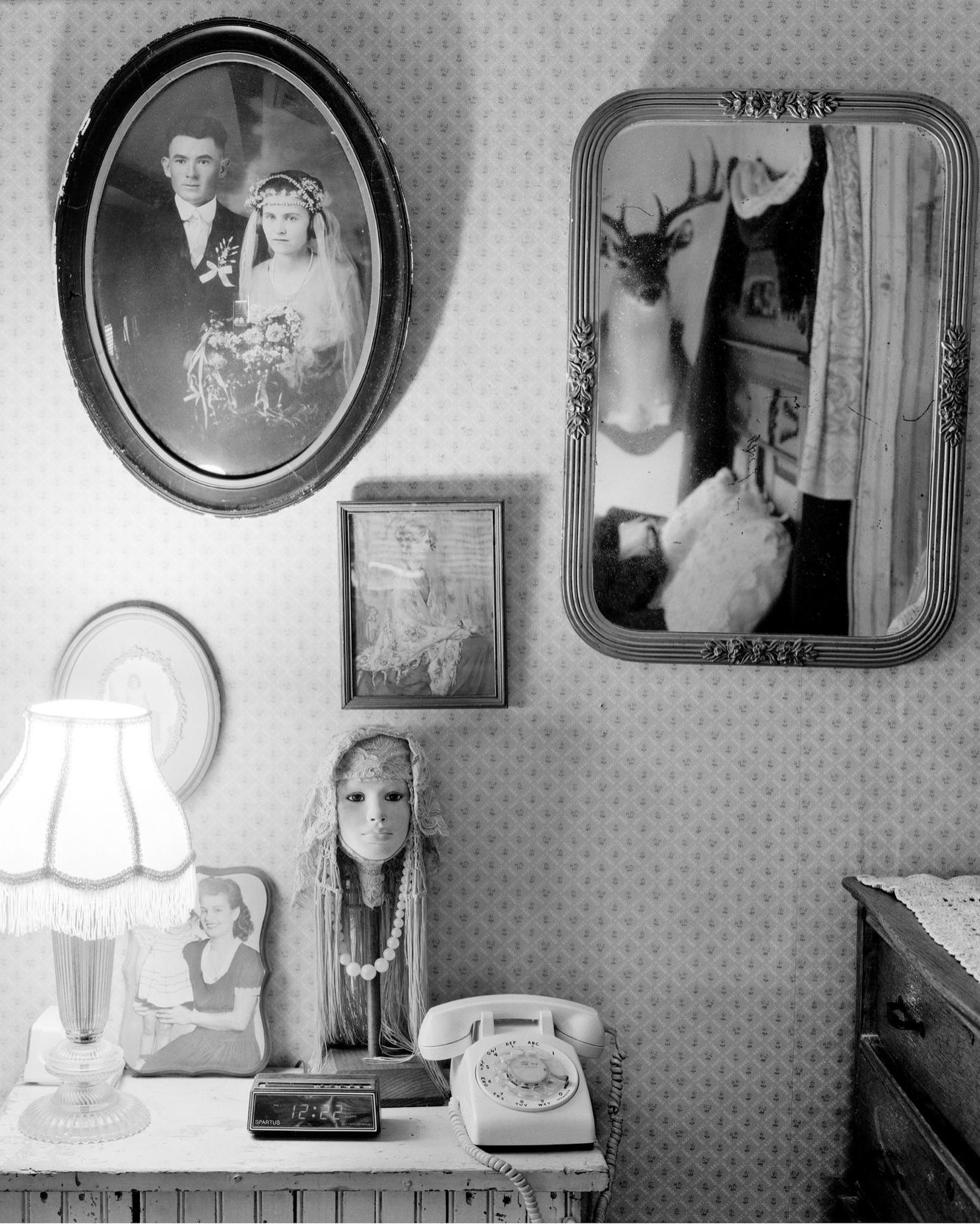

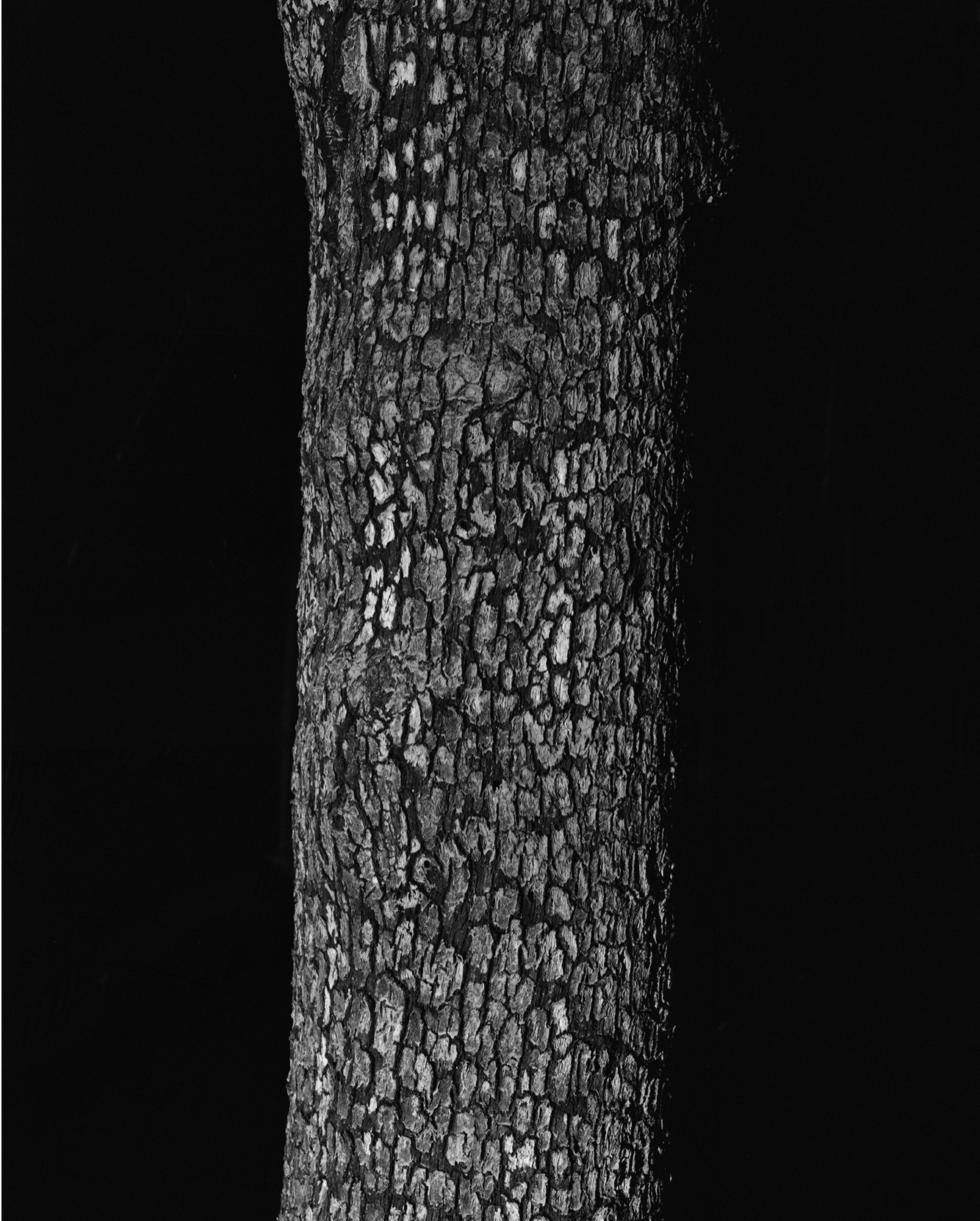

















Rockne, Bastrop County, Texas
I grew up in London hearing stories of a remote farm my parents lived on before I was born. I made a photographic pilgrimage to Rockne, Bastrop County, Texas and stayed a year. Arriving in October 2009 I found this region suffering from a debilitating and relentless drought, and witnessed communities trying to withstand the heat and subsequent wildfires.
In September 2011 I returned to Bastrop during the biggest wildfire the county had ever seen, instigated by severe drought conditions. The fire burned 50 square miles, took two weeks to contain, consumed more than 1,600 homes and was declared a National Disaster. I found the US Forest Service felling vast quantities of dead trees over acres of ash. There were fire-fighters who had nearly lost their lives as their own homes burned nearby. Everyone in Bastrop had been affected but supported each other unquestioningly.
These images are what remained from the post-apocalyptic events of the Bastrop County Complex Fire, and is a catastrophe caused I believe by the climate crisis. A recent scientific study published in the journal Nature says ‘the local city of Austin will reach its ‘climate change tipping point or ‘climate departure’ in less than 50 years’. (1)
In total, Texas lost 300 million trees to the drought. These stark figures are another reason to make work about the environment. Collectively these photographs are evidence of human apathy and carelessness, highlighting the weighty significance of our present actions and the legacy our species will leave behind.
This event played a significant role in my artwork. As I documented these tragedies I was captivated by the beauty that came out of the destruction, and moved to photograph regions that were transformed. I’d been reminded of my own self-destructive tendencies, but through making the work, learned self-destruction can be turned around, and this transformed to produce beautiful results.
(1) Get Ready for a Hotter World, Austin American Statesman, Oct 12th 2013